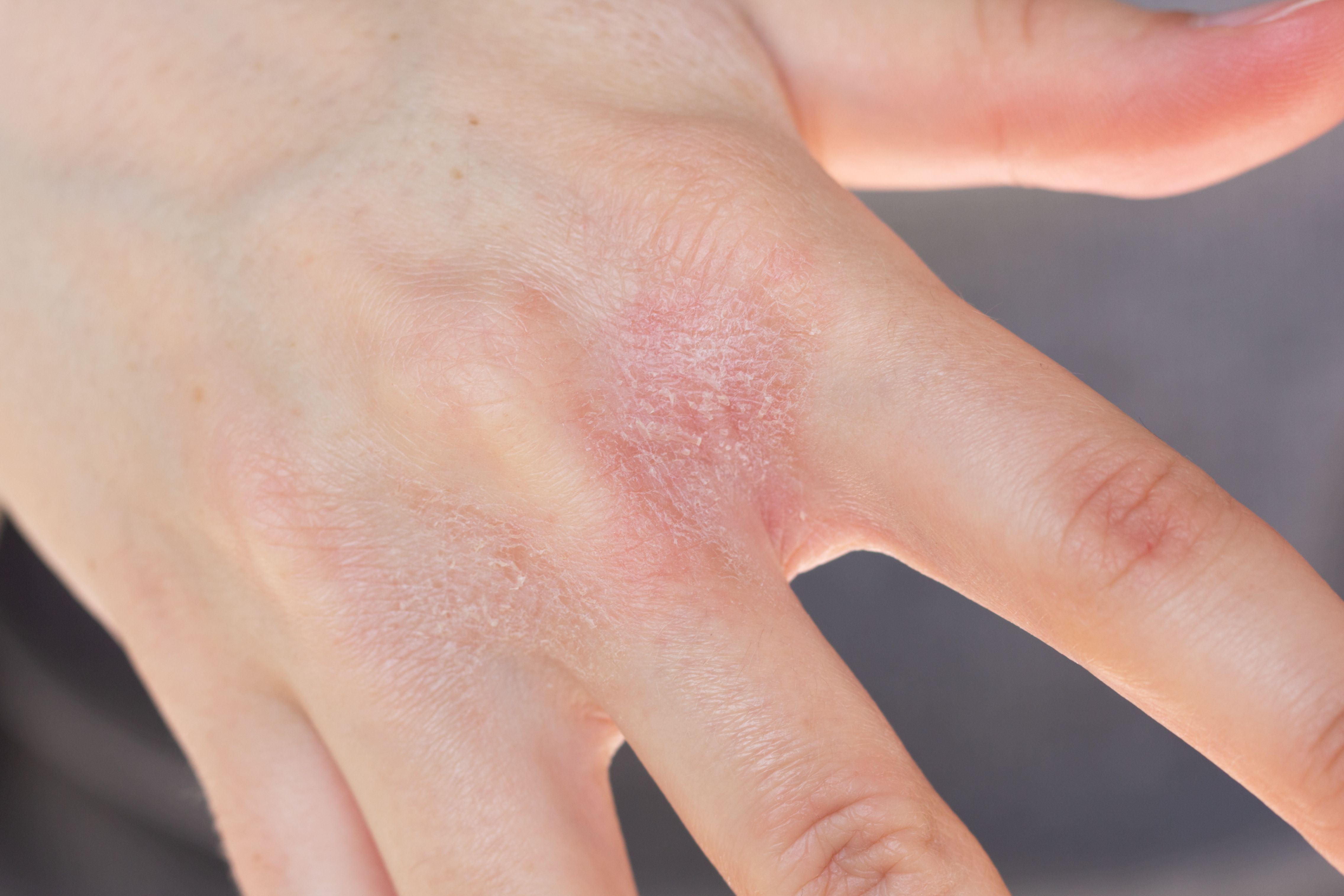- Acne
- Actinic Keratosis
- Aesthetics
- Alopecia
- Atopic Dermatitis
- Buy-and-Bill
- COVID-19
- Case-Based Roundtable
- Chronic Hand Eczema
- Chronic Spontaneous Urticaria
- Drug Watch
- Eczema
- General Dermatology
- Hidradenitis Suppurativa
- Melasma
- NP and PA
- Pediatric Dermatology
- Pigmentary Disorders
- Practice Management
- Precision Medicine and Biologics
- Prurigo Nodularis
- Psoriasis
- Psoriatic Arthritis
- Rare Disease
- Rosacea
- Skin Cancer
- Vitiligo
- Wound Care
News
Article
Increased Use of L23.8 Code in Allergic Contact Dermatitis Highlights Need for Specificity in Diagnoses
Author(s):
Key Takeaways
- L23.8 was frequently used despite specific allergen identification, with dermatologists more likely to misuse it than residents.
- L23.9 often served as a provisional code before patch testing, with residents more prone to misuse it for unrelated conditions.
A Finnish review highlights imprecise use of L23.8 and L23.9 codes for allergic contact dermatitis.
Over time, there has been an increase in the use of the diagnostic code L23.8 for allergic contact dermatitis in Finland, while there has simultaneously been a decreased in the use of the L23.9, according to a review published in Contact Dermatitis.1
The review demonstrated imprecise use of both codes, which may contribute to inaccuracies in data, research, and patient care.
Image Credit: © Anna - stock.adobe.com

Background and Methods
Version 10 of the International Classification of Diseases, or ICD, outlines 9 codes that may be used to categorize or define the origin of a patient's allergic contact dermatitis. These include adhesives, cosmetics, and chemical products, among others. L23.8 refers to contact dermatitis caused by agents not previously described in the other categories, while L23.9 describes contact dermatitis of unknown origin.2
According to review authors Kämäräinen et al, a 2024 registry-based study published in the same journal reported a rapid increase in the use of L23.8 in Finland from 1998 to 2021 when defining and describing the cause of allergic contact dermatitis.3 Considering this rapid increase, researchers sought to assess the use of codes L23.8 versus L23.9 and the implications imprecise use may have on national statistics, patient care, and more.
The review was performed with data from a single study center in northern Finland using data from 1998 to 2022. All patient data involving L23.8 or L23.9 codes were extracted and analyzed manually.
Findings
The L23.8 code was used for 472 patients, predominantly female (74.2%). Its usage increased significantly, especially after 2016, with dermatologists accounting for 78.6% of entries compared to 21.4% by residents.
In 85.1% of cases, L23.8 was used despite the identification of a specific allergen, which warranted a more precise sub-code. Dermatologists were more likely than residents to exhibit this pattern (89.0% vs 70.8%).
In 36.9% of cases, L23.8 was employed to document allergic contact dermatitis involving multiple allergens that should have been coded individually. Dermatologists were also more likely to use this approach (44.3% vs. 18.8%).
Allergens such as cosmetics (40.1%), drugs (22.8%), metals (18.6%), and rubber (8.9%) were frequently involved. Instances of improper L23.8 use were rare, such as its application for non-allergic contact dermatitis conditions or post-positive prick tests (n = 12 and n = 3, respectively).
The L23.9 code was used for 264 patients, again predominantly female (72.0%). Unlike L23.8, L23.9 was often applied in cases where diagnostic clarity was pending.
In 69.1% of cases, L23.9 was recorded before patch testing. Notably, 86% of these patients underwent patch testing within 3 months, indicating its role as a provisional code. In 12.6% of cases, L23.9 was used despite the presence of specific allergen information. Furthermore, 8.7% of cases involved multiple allergens that should have been coded individually.
In 4.9% of cases, L23.9 was used for conditions unrelated to allergic contact dermatitis, such as drug-induced dermatitis or phytophotodermatitis. Residents were more likely than dermatologists to misuse this code in such scenarios (7.1% vs. 2.5%).
The study revealed substantial imprecision in the use of both codes, particularly L23.8, where specific allergens were often identified but not documented with appropriate sub-codes. Similarly, L23.9 was frequently used as a placeholder during the diagnostic process or for non-allergic contact dermatitis conditions.
Conclusions
The review may have been limited by its single-center nature.
However, Kämäräinen et al note these findings underscore the need for improved coding practices to enhance diagnostic precision and data utility. Proper utilization of specific codes could better support clinical decision-making, epidemiological tracking, and resource allocation.
"Since registry-based studies have become more common, diagnoses should be recorded as accurately as possible to the reliability and precision of future registry studies," authors wrote. "In this way, we could be better equipped to track patterns of allergies over time."
References
- Kämäräinen J, Loukkola T, Mikkola J, et al. Imprecise coding in allergic contact dermatitis: a register-study from Northern Finland between years 1999 and 2022. Contact Dermat. December 30, 2024. doi:10.1111/cod.14744
- American Academy of Allergy, Asthma & Immunology. Contact Dermatitis Codes: ICD-10. October 2018. Accessed January 7, 2025. https://www.aaaai.org/Aaaai/media/MediaLibrary/PDF%20Documents/Practice%20Management/finances-coding/Contact-Dermatitis-Codes-ICD10.pdf
- Wikström V, Sinikumpu SP, Jokelainen J, Huilaja L. Incidence of allergic contact dermatitis in Finland 1998-2021: a nationwide registry-based study. Contact Dermat. 2024. https://doi.org/10.1111/COD.14688
Newsletter
Like what you’re reading? Subscribe to Dermatology Times for weekly updates on therapies, innovations, and real-world practice tips.







